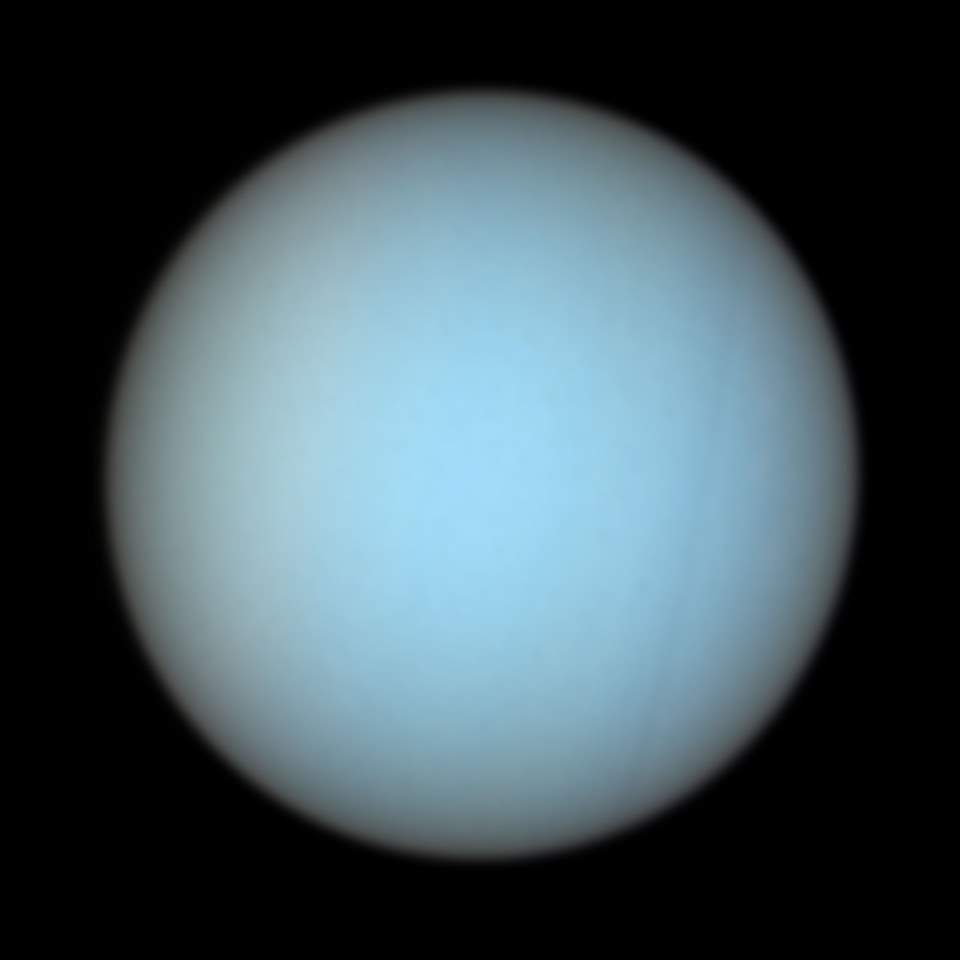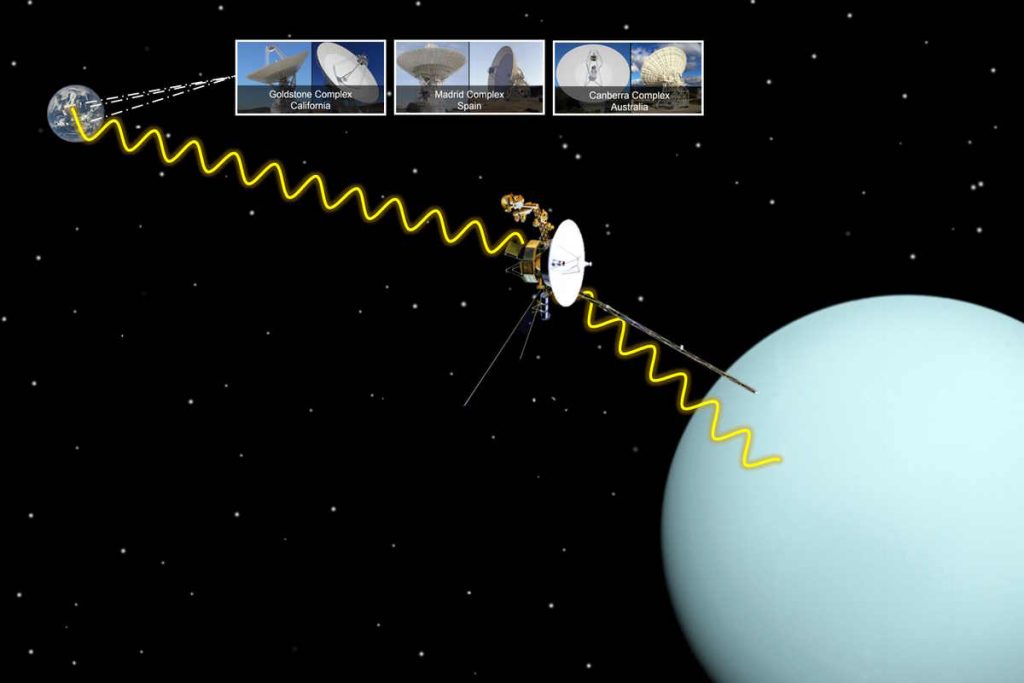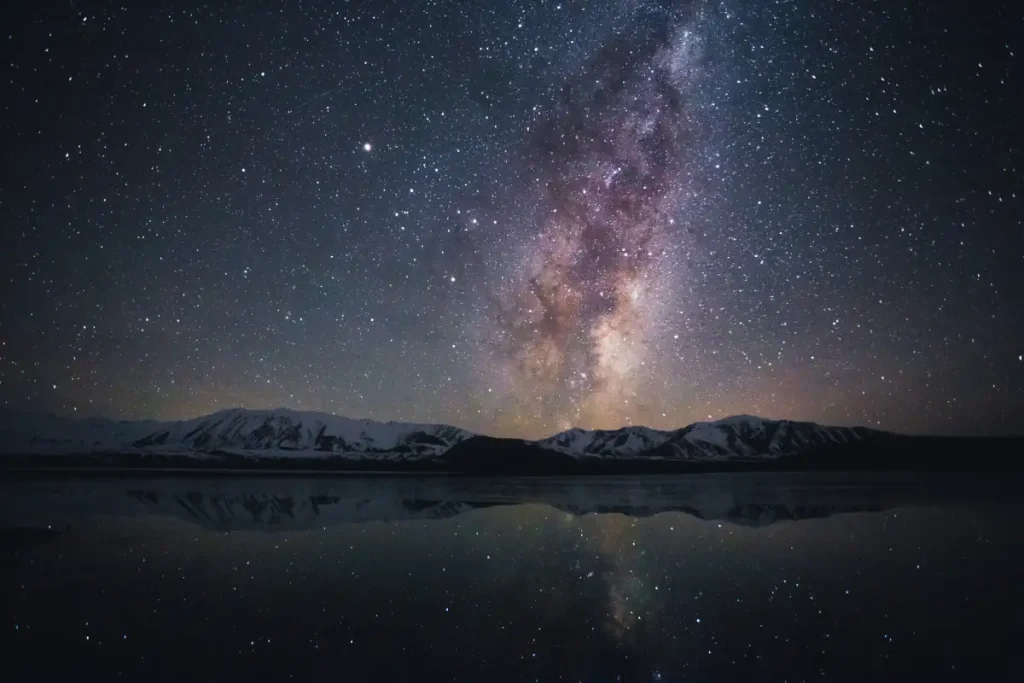Uranus looks like a featureless blue-green marble from space. Because of this, most people consider the gas giant “boring” and as a result, it receives the least attention from science enthusiasts. But, actually, the planets in our solar system are all fascinating in their own way, and each one has unique features that make it worth studying. Uranus has a number of interesting features and it is an important part of our solar system. It offers many opportunities for scientific discovery.
With a radius of 25,362±7 km (about 15,760 miles), Uranus is the third-largest planet in the solar system, after Jupiter and Saturn. It’s the fourth, behind Neptune, by mass, though.
Its average distance from the Sun is roughly 20 AU (3 billion km or 2 billion miles, see notes 1). 1 Uranus year is about 84 earth years. One day on Uranus takes about 17 hours and 14 minutes.
Here are the 10 amazing facts about Uranus, (probably) the most underrated planet in the solar system.
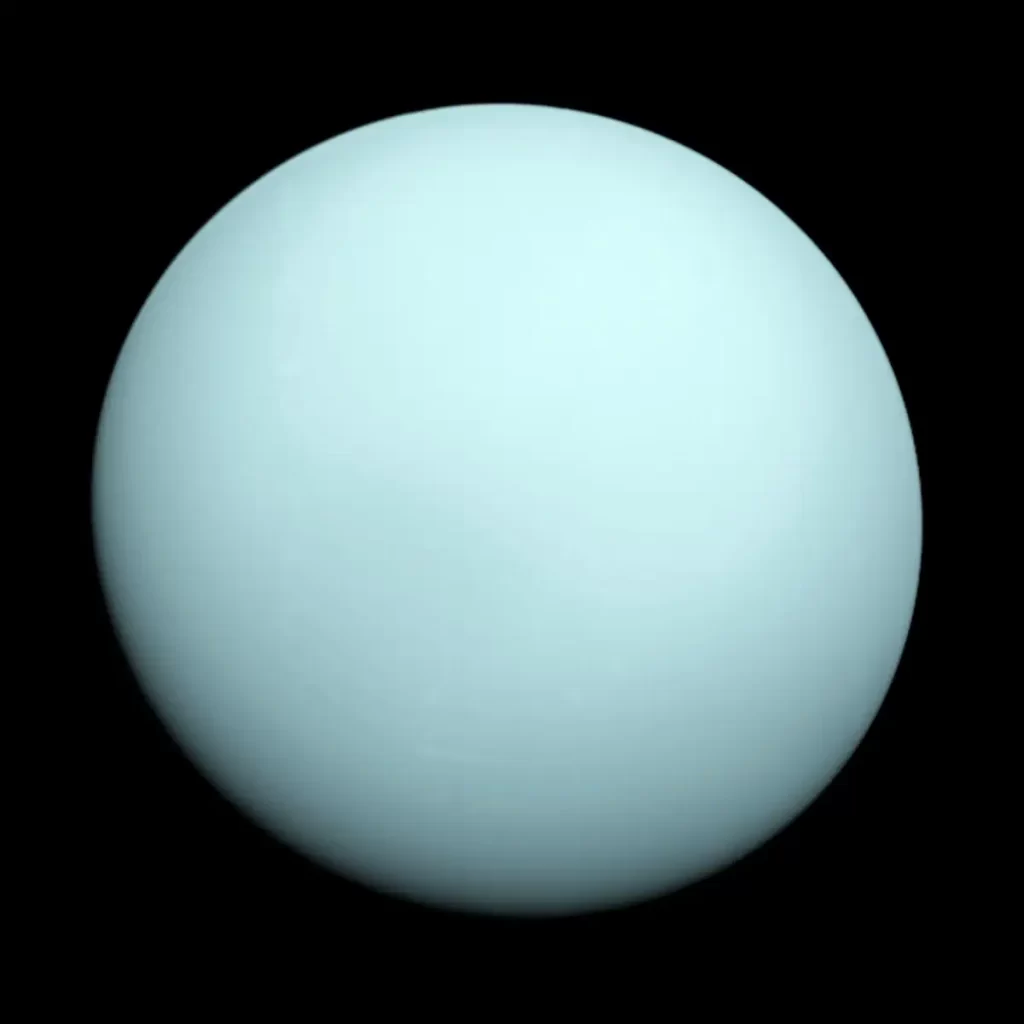
Uranus Facts
1. Uranus is the first planet discovered using a telescope
Uranus was discovered by the German-born British astronomer Sir William Herschel (15 November 1738 – 25 August 1822) on March 13, 1781. Herschel discovered Uranus while searching for comets with his telescope.
When he first saw the planet, Herschel initially thought it was a comet, but further observations showed that it had a circular orbit around the Sun and was therefore a planet. This made Uranus the first planet to be discovered since ancient times.
Herschel named the planet Uranus after the Greek god of the sky, and his discovery marked the beginning of a new era in our understanding of the Solar System.
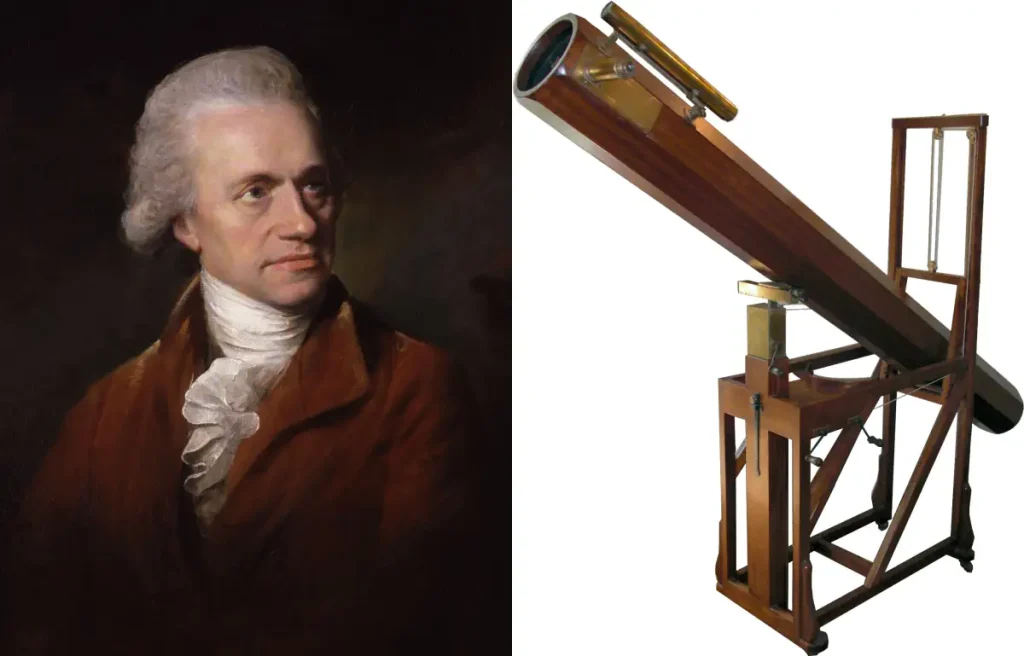
2. Uranus is considered an “Ice Giant”
Scientists often distinguish Uranus and Neptune as “ice giants” because they both have bulk chemical compositions which differ from those of the two gas giants of our solar system, Jupiter and Saturn.
3. The thermosphere and corona of Uranus reach temperatures of 1,070 °F (577 °C) and we don’t know how
Despite having an extremely cold average temperature (the planet’s average temperature is a frigid -353 °F or -214 °C) The outermost layer of the Uranian atmosphere (the thermosphere and corona) is absurdly hot: it reaches temperatures of 1,070 °F (577 °C). Scientists are unsure why.
Because Uranus is so far from the sun (its average distance from the Sun is 1.8 billion miles or 2.9 billion kilometers), the solar heat is insufficient to generate such high temperatures.
4. Uranus’ magnetic field is… weird
Uranus’ magnetic field is peculiar, it is off-center, by about 1/3 of its radius, and it is tilted at 59° from the axis of rotation. Meaning the core does not generate the magnetic field. Its core is also long dead.
This unusual geometry results in a highly asymmetric magnetosphere, where the magnetic field strength on the surface in the southern hemisphere can be as low as 0.1 gauss (10 µT), whereas, in the northern hemisphere, it can be as high as 1.1 gauss (110 µT). For comparison, Earth’s magnetic field is about 0.25 – 0.65 gauss.
Why Uranus’ magnetic field is that weird? We still don’t exactly know. But, according to one hypothesis, unlike the magnetic fields of the terrestrial planets (i.e. Earth) and gas giants, which are generated within their cores, the ice giants’ magnetic fields are generated by motion at relatively shallow depths, for instance, in the water-ammonia ocean (the other ice giant, Neptune has a similarly displaced and tilted magnetic field).
Another possible explanation is that there are oceans of liquid diamond in Uranus’s interior that would deter the magnetic field.
5. Uranus rotates on its side which hints at a wild past
Another unique configuration of Uranus’ axis of rotation is tilted sideways, nearly into the plane of its solar orbit. So, its north and south poles lie where the other planets of the solar system have their equators.
This “bizarre” orientation hints at an unusual past. Scientists think that a young proto-planet of rock and ice collided with Uranus about 4 billion years ago, causing its extreme tilt.
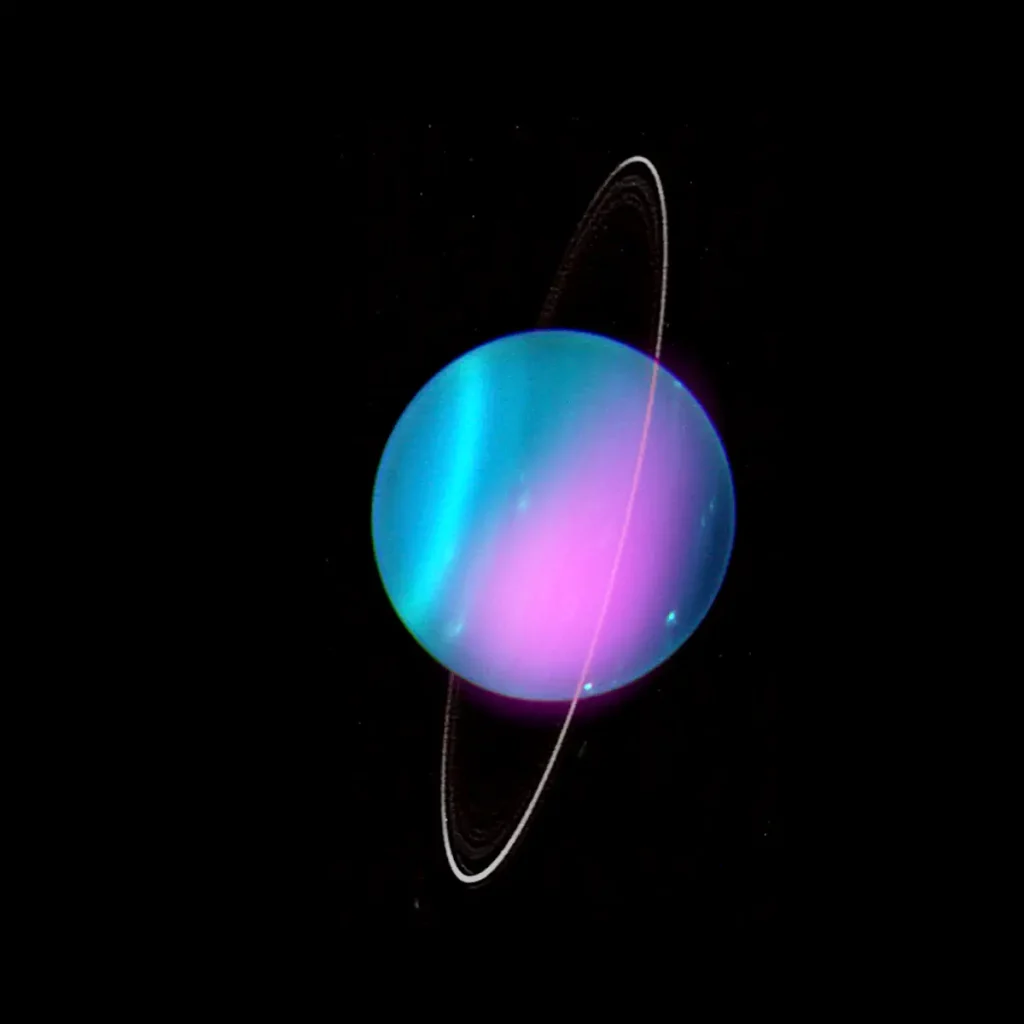
6. Uranus has rings
Uranus is surrounded by two sets of rings (a total of 13 rings) around its equator. They are so faint, though, because composed of extremely dark particles. Furthermore, the planet is relatively bright. So we cannot see its rings even using an amateur telescope.
Its rings were discovered by astronomers on board the Kuiper Airborne Observatory on March 10, 1977.
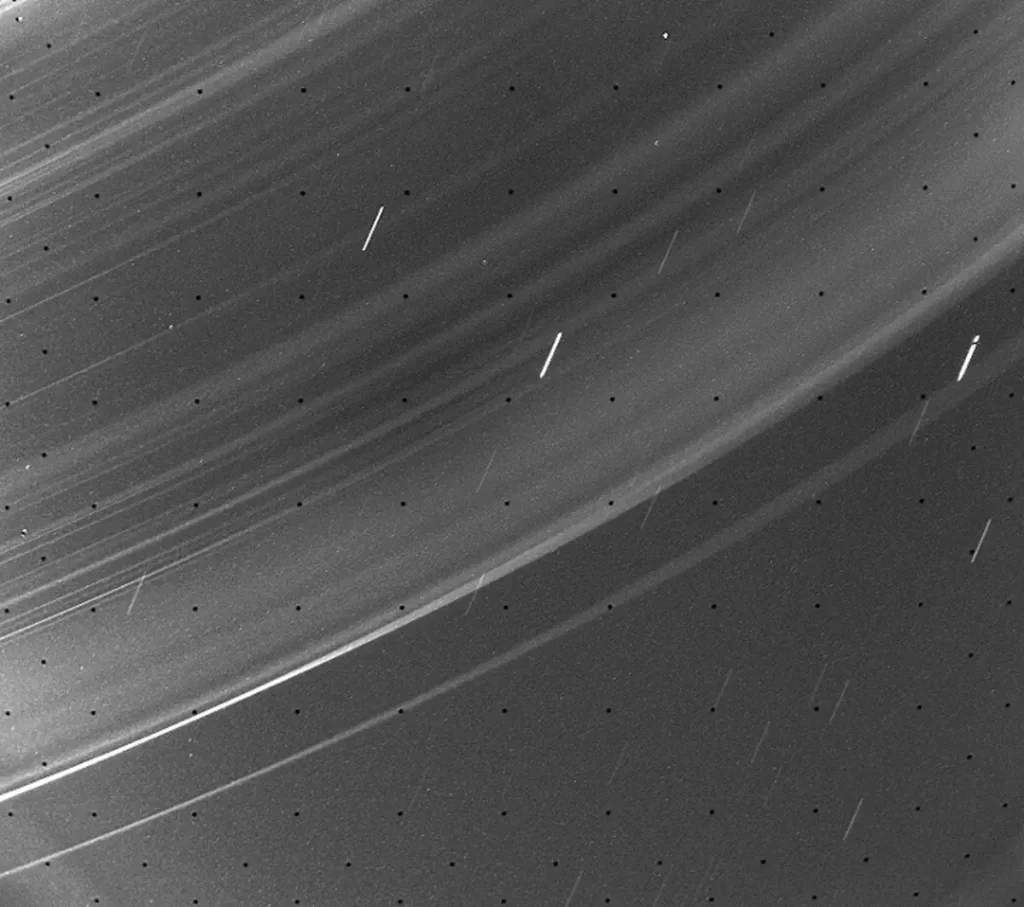
7. Uranus smells like rotten eggs
The clouds in the planet’s upper atmosphere are composed largely of hydrogen sulfide (H2S). It is the molecule that gives that horrible smell to rotten eggs.
8. It has strong storms
The winds in Uranus can blow up to 560 mph (900 km/h). For comparison, the speed of sound is about 760 mph on a standard day at sea level on Earth.
Neptunian storms are crazier, though, with windspeeds up to 1500 mph! (2,415 km/h)
9. Uranus is the coldest planet in the solar system
Despite being almost a billion miles (about 1.6 billion km) closer to the sun than Neptune, Uranus is colder in some places. It holds the record for the coldest temperature ever measured in the solar system for a planet: -371 °F (-224 °C) or just 49 °K.
On average, Pluto’s surface temperature is -387°F (-232°C), which is colder, but it is not a planet anymore.
10. Uranus is visible to the naked eye!
Despite being discovered only with the aid of a telescope (it was completely unknown until 1781), Uranus is actually visible to the naked eye!
But your eyesight must be perfect, the weather conditions must be great (without clouds), and the sky must be completely dark – without even a tiny amount of light pollution. Even then, all one can see is a very faint, blue dot representing the ice giant. It’s actually at the limit of what the naked eye can see. Uranus’ magnitude is +5.7, and the naked-eye limit for a completely dark sky is +6.0.
Notes
- An Astronomical Unit (AU) is the average distance between Earth and the Sun, which is about 93 million miles or 150 million kilometers. Astronomical units are usually used to measure distances within our Solar System.
Sources
- Uranus on the NASA Solar System Exploration website
- “All About Uranus” on the NASA Space Place website
- Uranus on the NASA website
- Uranus on Wikipedia
- The Planet Uranus on Waether.gov
- Uranian rings on the National Air and Space Museum website
- Uranus Fact Sheet on the NASA website
- Moon Landings: All-Time List [1966-2025] - February 2, 2025
- What Is Max-Q and Why Is It Important During Rocket Launches? - January 16, 2025
- Top 10 Tallest Rockets Ever Launched [2025 Update] - January 16, 2025
